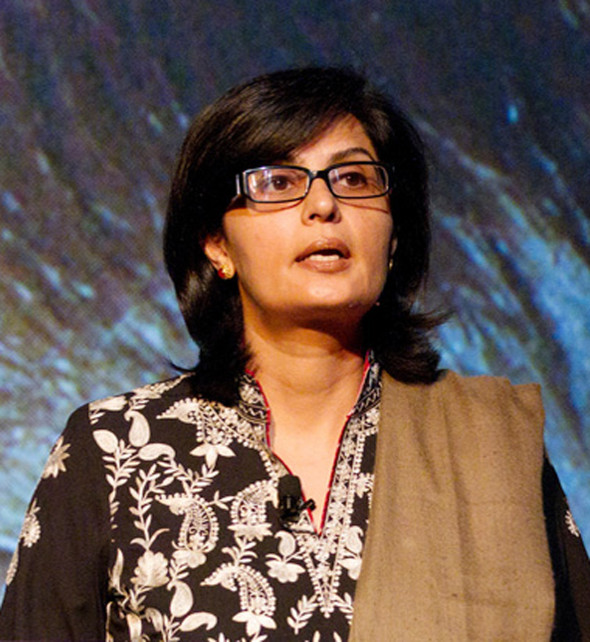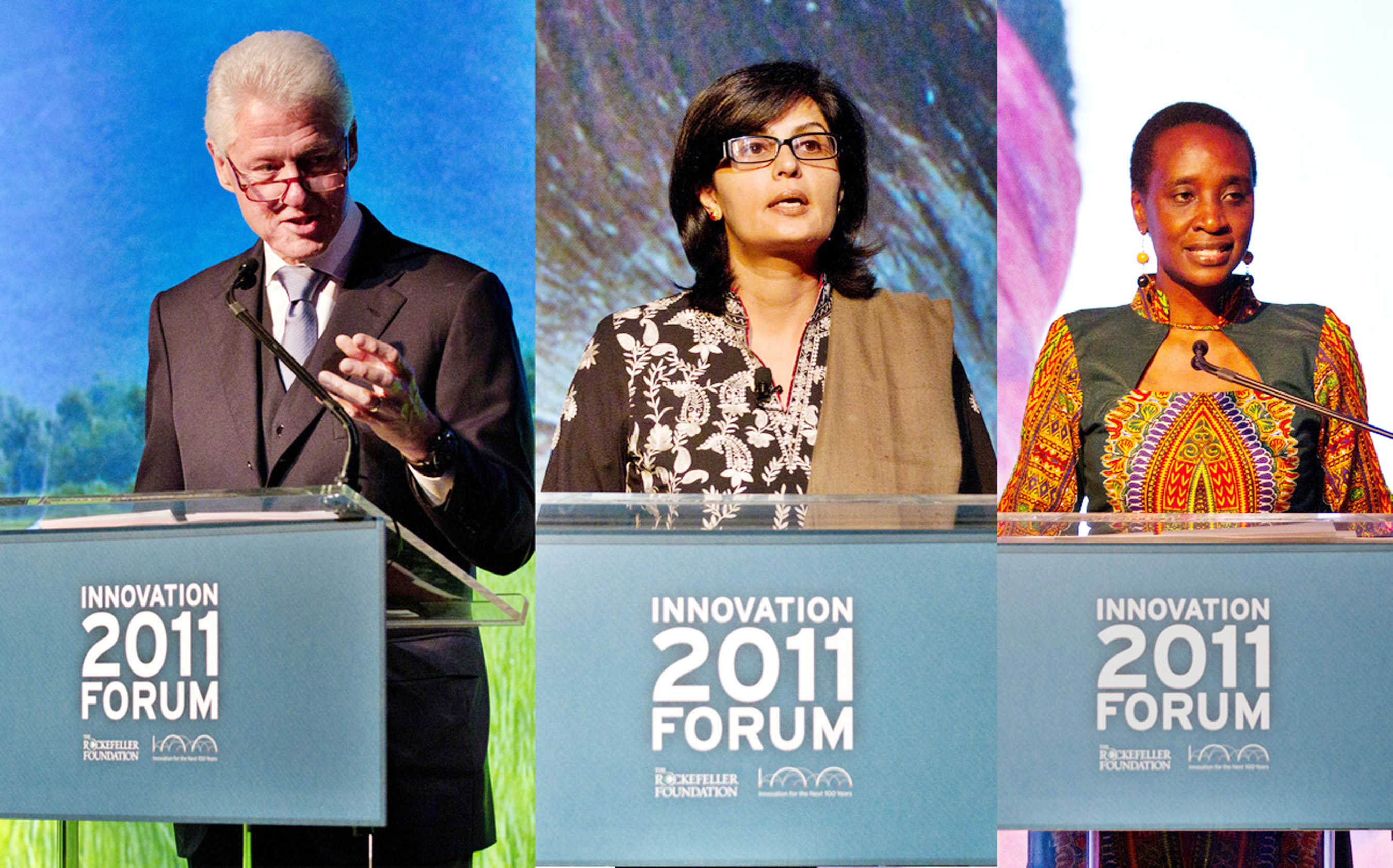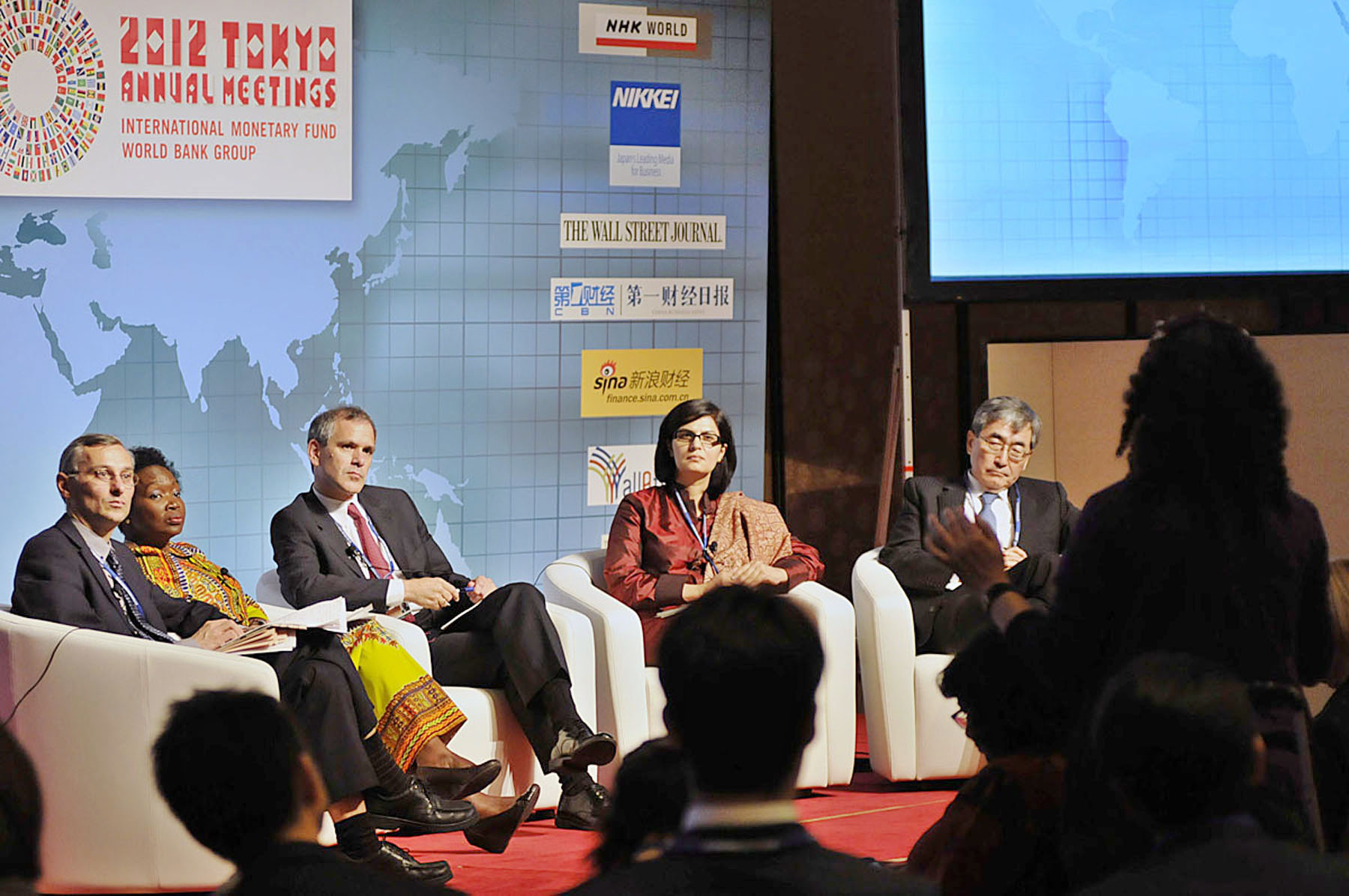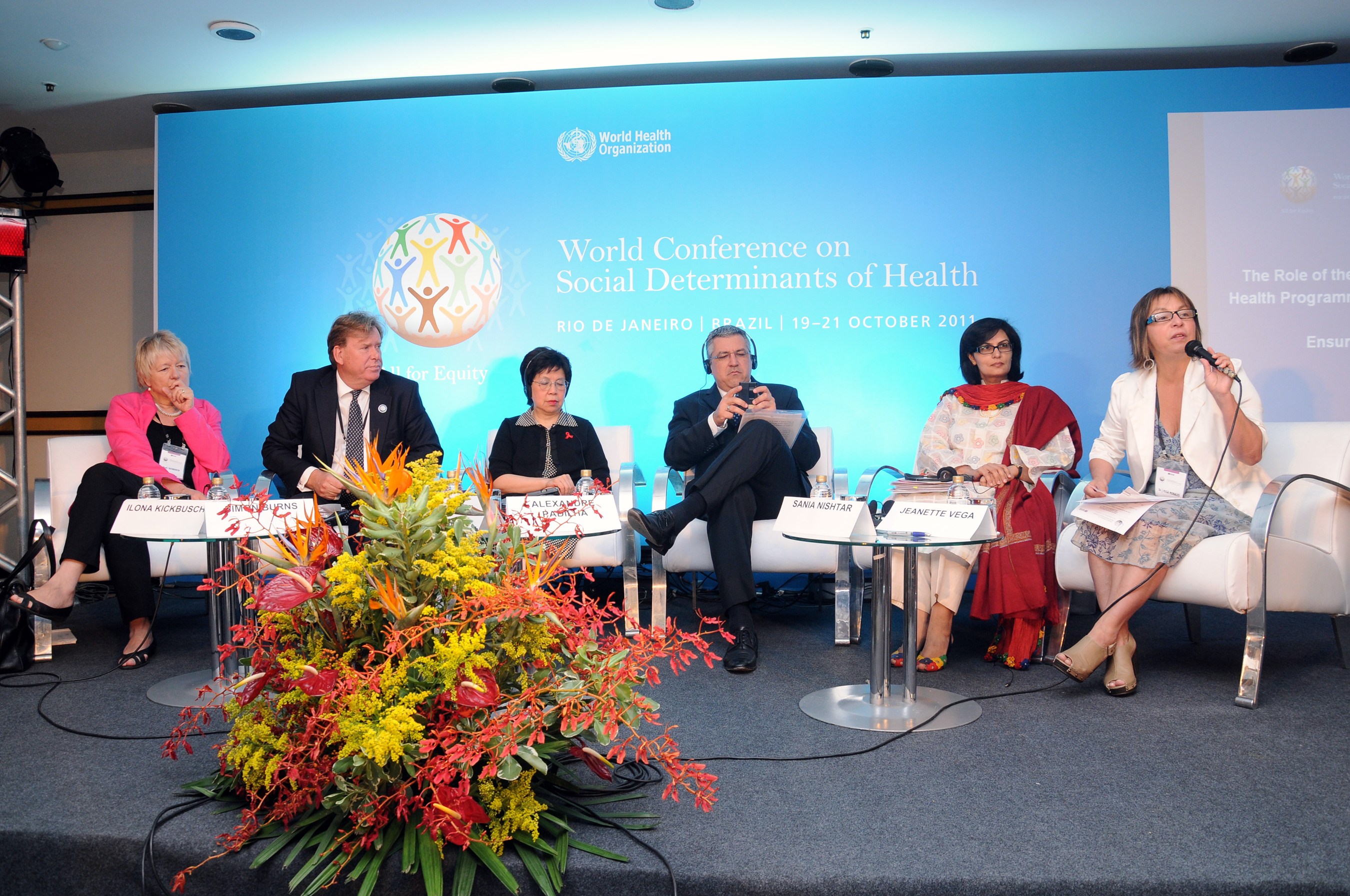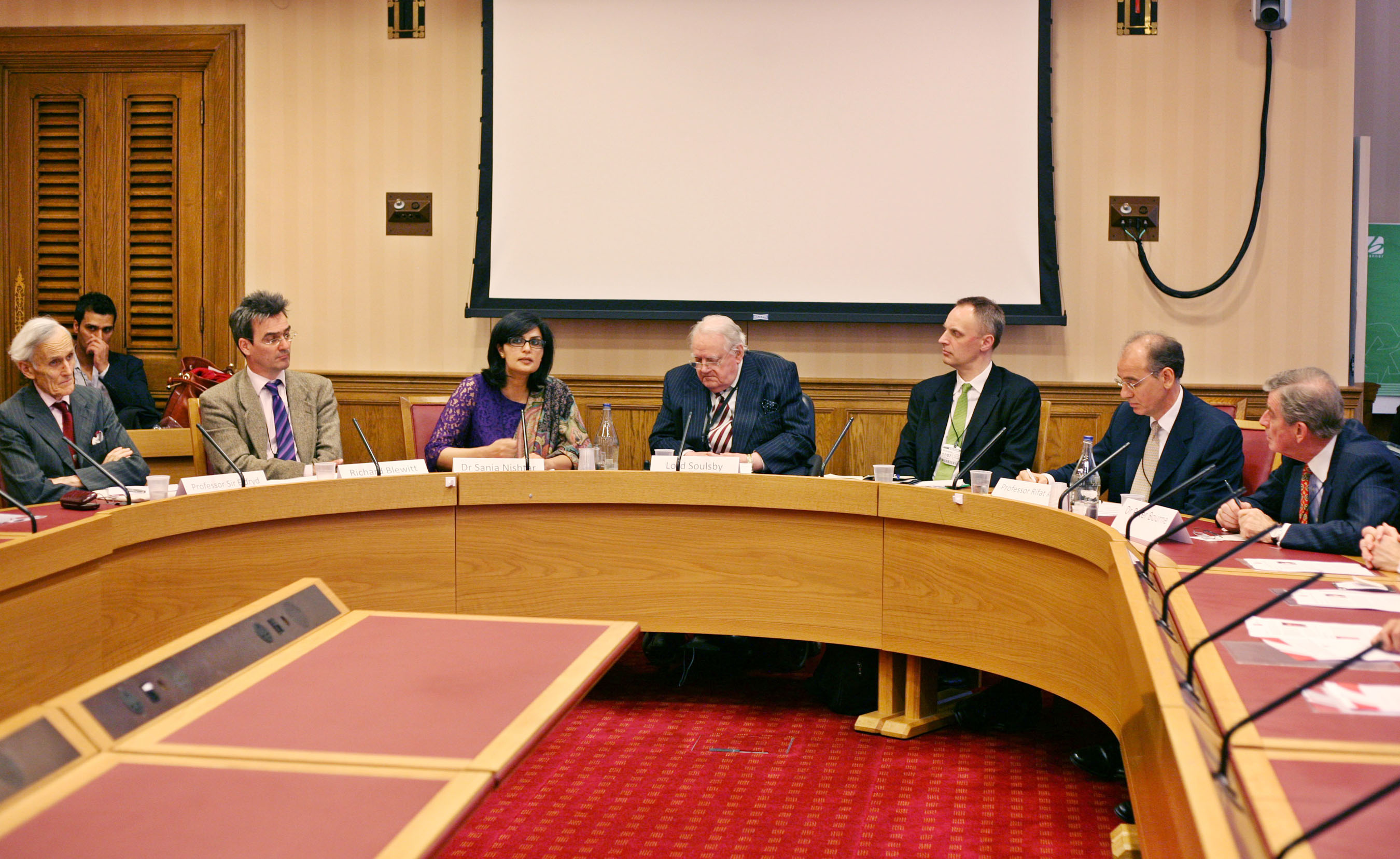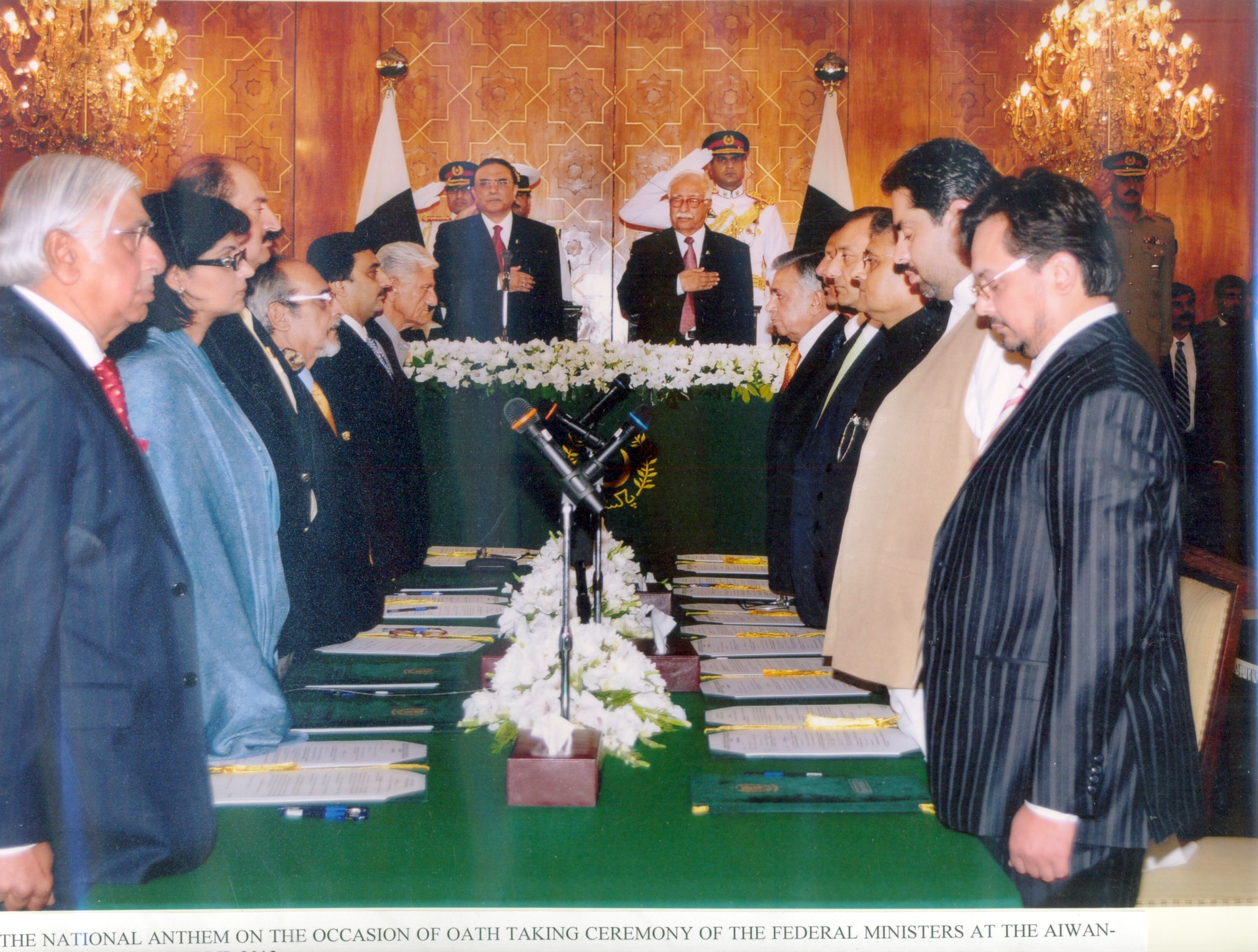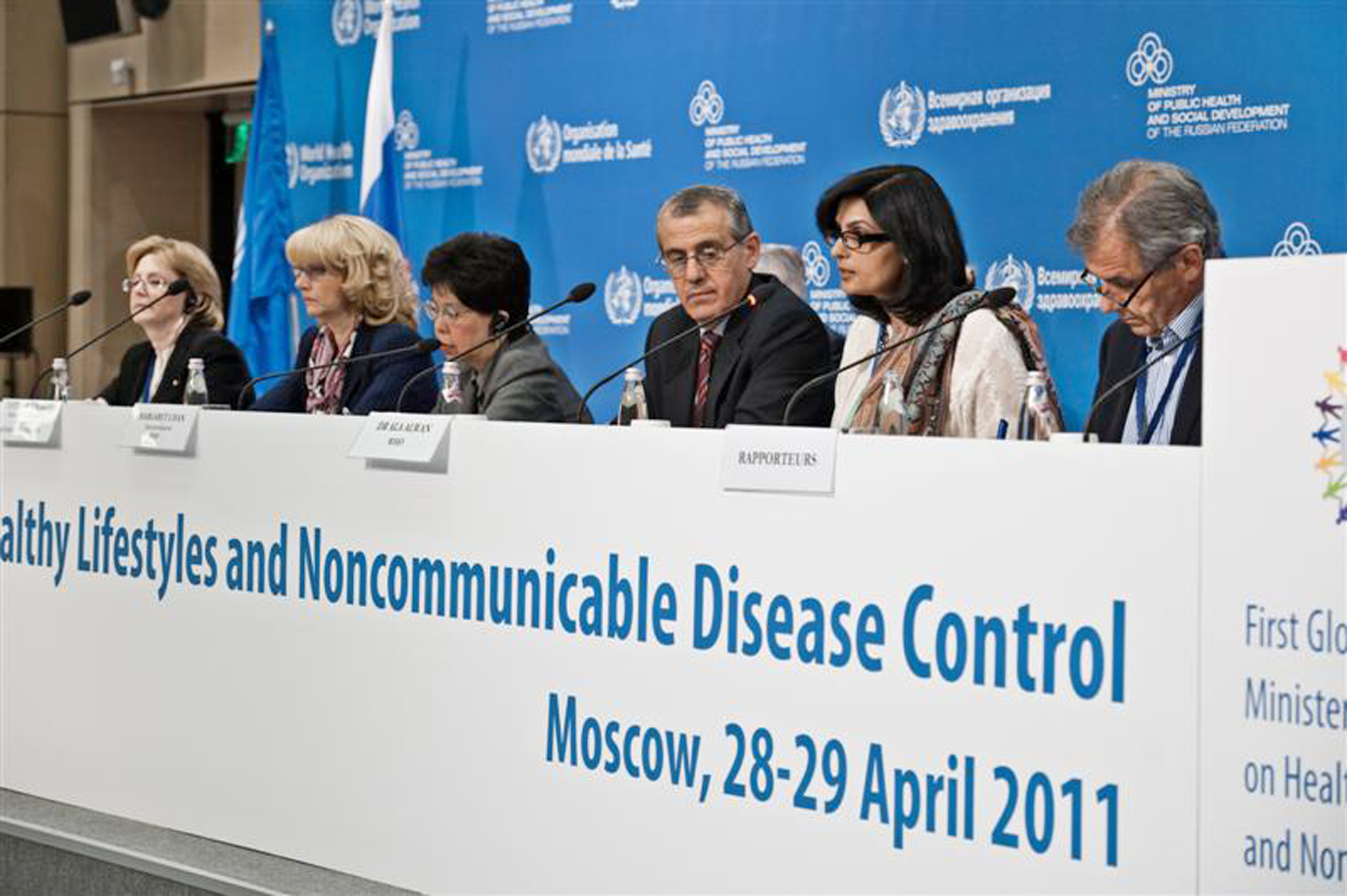Dr. Sania Nishtar, the only woman Federal Minister in the Caretaker Cabinet set an unprecedented benchmark in decision making transparency by making public an account of her tenure in public office in a set of Handover Papers, which can be accessed at http://sanianishtar.info/pdfs/HOP-Compendium_Final.pdf. This is just one of the many standards of performance she has set. In a short duration of two months she has contributed more than many ministers who have a full five year term. The widely hailed concrete step to establish the Ministry of Health, launching of a tuition fee scheme in the education sector, initiatives to improve the governance of many departments of the ministries she had responsibility for, articulation of detailed reform plans for each of her four portfolios and recommendations to reform the executive branch of the state are just a few of the things she has achieved. Beyond her role as a policy expert, she turned out to be an astute implementer and someone with sharp consensus-building and diplomatic skills. Blue Chip spoke to her about the lasting legacy she has left behind as a minister.
As interim minister with four portfolios you left a lasting legacy through the introduction of the Handover Papers, can you elaborate on this?
Dr. Sania Nishtar: “I wanted to set a precedent by being the first minister to open my decisions and conduct in public office for accountability. Ministries are places where the need for transparency in decision-making and accountability of actions matters the most, but paradoxically there is no mechanism in place to hold ministers accountable for their actions. Since, I have been a strong advocate for the need to institutionalise accountability and transparency in governance, it was only natural that I should be transparent about the decisions I took while I was in public office. In the absence of a government system of accountability, I decided to use my Handover Papers to serve the purpose.
I also noted that there was no system in place for handing over one government to the next. In an ‘organisation’ as critical as the Government, there are several matters of a strategic and tactical nature, which need to be communicated to the successor so that there are no detrimental policy vacillations. The absence of such a mechanism is one of the several critical flaws of the governance system of the executive arm of the state. My Handover Papers were therefore, also an attempt to set a precedent for government transitions so that every outgoing government communicates policy and operational positions to their successors in the public interest.”
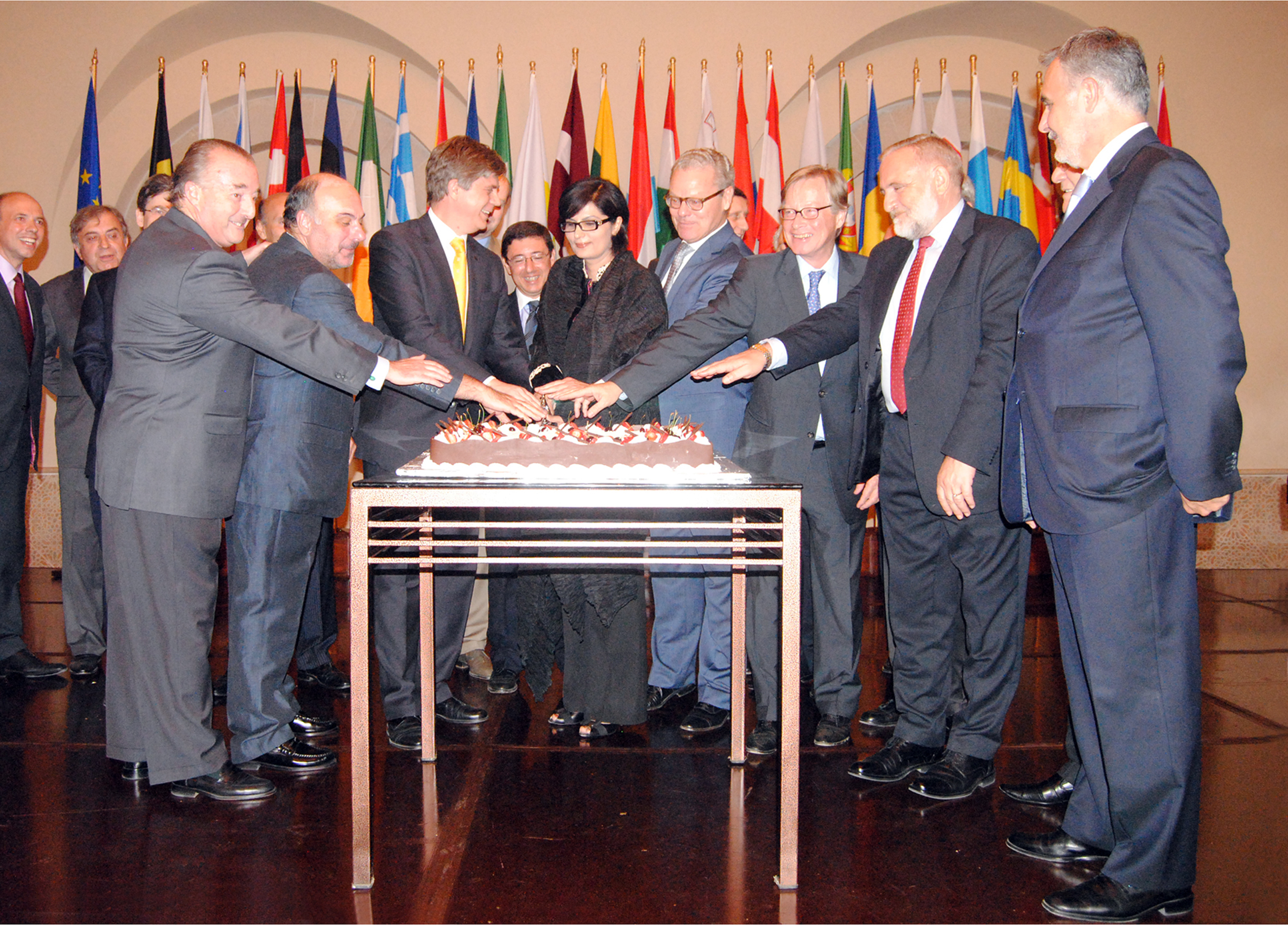
Sania Nishtar as Minister with 21 European Ambassadors on the anniversary of the creation of the European Union. Islamabad,
Your decision to establish the Ministry of Health was widely hailed internationally and was perhaps the only long-term policy decision of the Caretaker Government which was appreciated and embraced by the next government. It is widely believed that you were able to put in place in a few weeks what an elected government was unable to do in its entire term. Can you tell us a little about the rationale for creating the Ministry of Health and why it was so critical?
SN: “Pakistan’s Ministry of Health (MoH) had been abolished in 2011 after the 18th Constitutional Amendment on the perceived notion that the Federal Government had no responsibility in health after ‘health’ became a ‘devolved subject’. The situation was similar for seventeen other ‘subjects’. It wasn’t appreciated then that in all countries, which exist as federations, devolution of health to the sub-national units needs to co-exist with defined federal/central/national responsibilities for which the federal government has to assume charge. In fact, Federal Legislative Lists Part I and Part II of Pakistan’s Constitution stipulate several areas relevant to health systems which are responsibilities of the Federal Government and the Federation, respectively. These include health information, health regulation, ensuring compliance within international agreements and research amongst other things. After abolition of Pakistan’s Ministry of Health, many of these functions could not be devolved to provinces and were placed under the control of nine other Ministries/Divisions, with resulting fragmentation of health institutions, which posed many problems. Lack of coordination both federally and at the federal-provincial level, interagency turf tensions, undermining of federal level decision-making ability because of the information-evidence-policy disconnect, and lack of clarity about responsibilities, with resulting difficulty for international partners, to name a few. The latter was most evident during the measles outbreak, which was at its peak when the Caretaker Government took office. International agencies were forced to seek clarity on institutional readiness before money for the technically-recommended Supplementary Immunization Days could be made available. Pakistan also risked travel bans as a result of these failings.
I had been advocating for the consolidation of federal/national health functions under a single ministry ever since the MoH’s abolition. In fact, when the 18th Amendment was enacted, I was perhaps the lone voice asking for remedial action and therefore it was but natural that when I stepped into public office, this is the first thing I wanted to tackle.
The Prime Minister and my Cabinet colleagues supported me in this decision and hence we were able to re-establish the Ministry of Health. I also developed a ‘Mandate and Remit Paper’ (which is appended to my Handover Papers) to outline what the post-18th Amendment, federal/provincial and district roles are. Through this paper I wanted to demonstrate that the Ministry of Health has been created very much in line with the spirit of the post-18th Amendment Constitution and that there is a legal justification for its creation. During my term, I also oversaw the transition arrangements so that human resource, and other fiscal and material input and planning underway could be handed over to the new Ministry. Of course, it is now up to the new minister to take this structure forward.”
You had charge for three Ministries including the Ministry of Science & Technology, Education & Training and the Ministry of Information Technology. Which one of them was the most challenging, and what was the key thrust of your work in each of these ministries?
SN: “The nature of what I did in the respective ministries varied according to the need. For example in the Ministry of Information Technology, I noted that there was a dire need to put governance back in order, since there were serious distortions. The ministry had been without a minister for five years. With frequent changes in secretaries, ad hoc appointments, attached departments deviating from their missions, affiliated companies not complying with corporate governance polices, and sick public sector enterprise hemorrhaging resources, the first priority was to focus on governance. For these reasons, this was also the most difficult ministry. An account of what I did to initialise reform and the needed next steps are in the Handover Papers for that ministry.
In the Ministry of Education and Training (MoET) I focused more on strategic parameters regarding federal, provincial and district education roles after the 18th Constitutional Amendment. In the Handover Paper for MoET, I articulated a framework for reform relevant to each of the five areas, which are federal functions in education after the 18th Constitutional Amendment and demonstrated how selected policy choices in the ‘pathway to change’ had the potential of ushering sustainable change. Launching of the Tuition Fee Access Scheme was an effort to show how the federal edge can be strategic for equity objectives in a context where education is a provincial subject.
Also, in the Ministry of Science and Technology (MoST) my engagement was more at a strategic planning level. My concern was that MoST’s research institutes are largely disconnected from academia and that both do not optimally link with the market, entrepreneurs and national sectoral research priorities. The latter have not been defined as a starting point. In this regard, I have recommended five policy levers of change for reform within this sector. In my opinion, if these are implemented in tandem, they could have a synergistic effect in linking research and development (R&D) and academia with the process of national development on the one hand and can have a transformative role in promoting a culture of entrepreneurship on the other. I have tried to sow the seeds of change to the extent possible within the two-month term. And of course, you have already heard of what I did for Health.”
During your term as interim minister, your voluntary appearance at the Supreme Court saved Pakistan from a potentially ill prepared e-voting embarrassment, can you elaborate on this?
SN: “The primary objective of our Caretaker Government was to ensure the conduct of elections, and therefore when I assumed office, I examined each of my four portfolios to ascertain where the election-related interface existed so that I could quickly get a sense of necessary measures that needed to be taken. At MoIT, the interface existed at several levels, including e-voting. Although, MoIT did not have a direct implementing role, I took stock of the situation, given that MoIT is a policy steward in the area and I felt responsible in terms of oversight.
On analysing the situation, I found out that the Supreme Court had issued a directive in response to a petition for the establishment of an e-voting system and had desired that this be expedited. I gathered that there was willingness and desire on part of both the Caretaker Government as well as Election Commission of Pakistan (ECP) to comply with the Court’s order in order to give overseas Pakistanis the right to vote. But during our two meetings with ECP, I could immediately tell that this would practically be impossible. Although NADRA had developed the customised application and had demonstrated its use during presentations at ECP, several steps needed to be completed before the software could actually be deployed. For instance, it had to be tested in real situations overseas, and in each of the countries where it needed to be deployed, there were a number of steps involved. A third-party audit of the algorithm used for e-voting also needed to be conducted. The procurement process for the hardware on which the application was to run was yet to be initialised. The human resource that had to man this system in Pakistan missions abroad needed to be hired and trained. The Foreign Office had been very proactive in pursuing permissions from the nine countries that the Supreme Court wanted this system functioning in, but had no control over responses from these countries. There were huge implications at the end of Pakistan’s missions abroad in terms of physical requirements, awareness creation, and soliciting local permissions. Visas needed to be secured and people needed to be trained.
I was concerned that we would not be able to complete this in time, and even if we did in a half-baked manner, foreign missions would not be able to complete preparations at their end, which would cause a huge embarrassment to the Government of Pakistan on Election Day. I was also fearful that we could be blamed for being partial by making it available in nine countries only and not in others where Pakistani expatriates also reside in large numbers. Furthermore, none of the political parties, in their engagement with ECP, had signaled confidence in the use of e-voting and we risked being criticised for being biased if we went ahead. I, therefore, volunteered to appear before the Honourable Supreme Court to explain the situation and was delighted to have been able to play a role in getting the right point of view across, and subsequently the right decision. My account in the Supreme Court Short Order is documented as a response of the Attorney General, given that he is responsible for responding on behalf of the government. This was the first time a Federal Minister voluntarily appeared in the Court without summons. Although unusual, I thought it was necessary.
A lot of misunderstandings in the Government’s system happen because of lack of communication and in the case of e-voting, timely communication and reaching out to the other stakeholders did matter a lot.”
In the field of education, you won recognition for reaching out and allaying misunderstandings with the Higher Education Commission, how did you go about this?
SN: “As I have explained for the case of e-voting, communication between stakeholders is of critical importance. During my term in office as Education and Training minister, I tried to promote better communication and trust between the Ministry and the Higher Education Commission which helped to dispel many misunderstandings.”
YouTube has been banned since September 2012. As Minister of IT & Telecom, you must have faced considerable pressure over the YouTube ban. How did you deal with this?
SN: “One of the immediate pressures I faced from people in general was to open access to YouTube! The blockade had been imposed by the PTA on the Ministry of IT & Telecom’s directive due to blasphemous content in the video titled Innocence of Muslims. On assuming office I held several meetings with the technical teams looking after the matter and I also held a video conference with Google to carefully analyse the situation. I took stock of various options which could be pursued. The straightforward option was to request Google, YouTube’s parent company, to block content. Unfortunately, this wasn’t possible at YouTube’s end since YouTube provides services to Pakistan through USA via the dotcom domain and is only able to respond to a country-specific request if it is localised in Pakistan (www.YouTube.com.pk). The impediments in that regard were absence of intermediary liability protection legislation in our country.
In my discussions with the technical teams, it appeared that there were three options to give them that protection. The first involved amending the Electronic Crime Bill, which is currently under review. Unfortunately, that option could not be pursued since the Act needed to go to the Parliament, having been enacted as an Ordinance twice. The second option arose in the wake of petition no. 958/2013 in the Lahore High Court on opening YouTube. The Honourable Court was likely to be open to the idea of granting intermediary liability protection as an interim measure subsequent to the government’s commitment to enact legislation and Google’s acceptance to the court’s protection. I was asked to give a statement personally to indicate the former, which I did and also accepted to appear in the court personally on May 16.
In a videoconference with Google, I encouraged them to accept the court-granted intermediary liability protection as an interim measure whilst we got the law prepared. At the time when I left office, we were still waiting to hear from them and hence the court hearing was postponed. Even in the event of Google’s acceptance and the Court’s decision to grant interim protection, the government has to enact intermediary liability protection legislation as a definitive measure to overcome this problem sustainably, either by amending the Penal Code or enacting new legislation.
In terms of the way forward, my successor must engage with Google to get a final answer from them regarding their acceptance of court-granted intermediary liability protection, as an interim measure and encourage them to appear in the court. Meanwhile, the definitive legislation must be put in the pipeline as soon as Parliament goes to session.
I would like to place on record that I also explored other options to open YouTube, such as redirection of YouTube Pakistan page to another country page, where the documentary is blocked. I would like to acknowledge the constructive help of the American Embassy in that regard. Unfortunately, it wasn’t possible to deploy that solution due to technical and legal reasons. In meetings with the PTA, I explored if adoption of a legal mechanism to block content was available and if so, if it was feasible to deploy that regardless of YouTube being localised. However, given the plight of governance at the PTA, I don’t see this option coming to fruition in the short to medium term.”
Another of your decisions in the health and population sectors, which was hailed related to integrating health and population. Can you tell us a little about that?
SN: “Federal institutional consolidation in the health sector also served another objective — this reform helped achieve the integration of health and population. A unique situation existed in Pakistan for over four decades where the delivery of health and family planning services were ‘siloed’ in two different institutional arrangements — the Ministry of Health/provincial departments of health and the Ministry of Population Welfare, respectively.
Institutional separation between health and population had resulted in marginalisation of family planning and reporting health services due to their separation from core health issues. Several attempts had been made by the Government of Pakistan in the past to merge both the institutional hierarchies in order to integrate family planning with maternal and child health services, but all of them had failed. After the 18th Amendment and abolition of the Ministry of Population Welfare, population also stood fragmented at the federal level and there was little institutional capacity for normative work. As part of health reorganisation, I also placed population alongside health, thereby helping overcome a longstanding institutional disconnect.”
Before leaving the government, you left a special message for each of your government colleagues; can you tell us about this?
SN: “On the day I left office, I e-mailed thousands of Government functionaries a message inscribed on a wallpaper which reads, ‘While serving under the flag of the crescent and star, always remember, Government is a sacred trust’. I was hoping that the wallpaper on their computer will serve a constant reminder while in office. That wallpaper is still downloadable at http://sanianishtar.info/images/A_wallpaper_message_from_Dr_Sania_Nishtar.jpg.”
You led the Pakistan Delegation to the World Health Assembly in Geneva and the newspapers carried the heading, Nishtar shines at the World Health Assembly. Can you tell us a little about that and in particular about your address in the Assembly which was greatly appreciated?
SN: “The theme of the WHA this year was centered on the framing of health goals after 2015, which is when the Millennium Development Goals come to term. Since I was quite familiar with the international discourse on the subject — having been part of the UN thematic consultation on health in the post-2015 agenda held in Gaborone, Botswana in March — I was able to frame Pakistan’s statement at the World Health Assembly in such a way that it resonated with what the international audience wanted to hear. Also, the Ministry of Health had just been re-established and hence the statement at the WHA was much appreciated. I was greatly humbled.”
During your term in office, you launched the Pakistan Lancet Series, can you tell us a little about that?
SN: “The Lancet is a leading medical journal published in London and any medic will tell you that it is extremely prestigious to publish in the journal. The Lancet has a process of publishing in-depth country series. As the series editor of the Pakistan Lancet Series I had been leading the technical process of the series over three years, and it so happened that the series had to be launched at a time when I happened to be a minister.”
Of all your remarkable achievements as a minister, which are you the most proud of?
SN: “I am humbled that I was able to take some needed steps. In terms of what I think was the most significant, perhaps it was signaling of the importance of integrity, transparency and accountability, which I feel were the most salient.”
Your NGO, Heartfile is famed for both its role as a policy think-tank as well as its humanitarian arm, particularly its innovative sms-based health programme which has received international acclaim; what will be your priorities when you go back?
SN: “On the think tank side there are many studies in the pipeline with many publications deadlines and on the health financing arm a major scale up is planned.”
BOX ITEM:
Sania Nishtar graduated from medical school in 1986 as the best graduate with 16 gold medals, a college record, which remains unbroken to date. In 1999 she left a lucrative career as Pakistan’s first woman cardiologist to establish the NGO think-tank, Heartfile which today is the most powerful health policy voice and catalyst for health reform in Pakistan and is recognized as a model for replication in other developing countries. She is the founder of many other health institutions, Pakistan’s Health Policy Forum and Heartfile Financing, the award winning program to protect people against health impoverishment.
Sania Nishtar’s has in-country and international experience. Internationally, she is a member of many Expert Working Groups and Task Forces of the World Health Organisation, a member of the board of the International Union for Health Promotion, the Alliance for Health Policy and Systems Research. She is Vice Chair of the World Economic Forum’s Global Agenda Council and a member of the Ministerial Leadership Initiative for Global Health, the Clinton Global Initiative and is Chair of GAVI’s Evaluation Advisory Committee. She also led the Pakistan Lancet Series on Health Reform. She has previously headed many global initiatives, including the award winning Global World Heart Day campaign. She is a regular plenary speaker, chair or moderator at global health meetings and a part of organizing major international conferences. She has chaired or been part of many international declarations and statements of the World Health Organization.
Sania Nishtar is a key health policy voice in Pakistan, the author of Pakistan’s first health reform plan, Pakistan’s first compendium of health statistics, and the country’s first national public health plan for NCDs. One of her books, an analysis of Pakistan’s health systems became the blue print for the country’s health policy. She is a member of many boards, advisory groups and task forces and a voice to catalyse change at the broader governance level in Pakistan.
Sania Nishtar is the author of 6 books, more than 100 peer review articles and around the same number of op-eds. Her latest, Choked Pipes, was published by Oxford University Press in 2010. She is the recipient of Pakistan’s Sitara e-Imtiaz, a presidential award, the European Societies Population Science Award, and many accolades of the International Biographical Centre, Cambridge and the American Biographical Center. In 2011 she received the prestigious Global Innovation award, which was given only to four individuals in the world, one of them being President Bill Clinton. Sania Nishtar holds a Fellowship of the Royal College of Physicians and a Ph.D from Kings College, London.
In 2013 she served as a Federal Minister in Pakistan’s Interim Government, where she held four portfolios, including Education and Trainings, Science and Technology, Information Technology and Telcom, and Health. This interview is based on h



